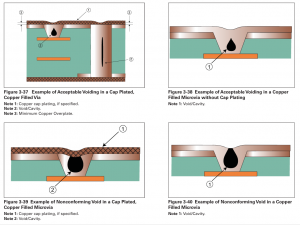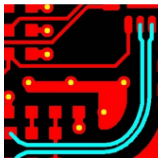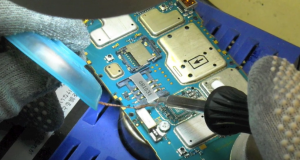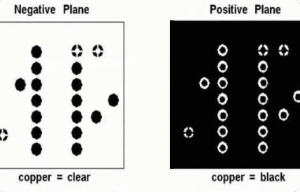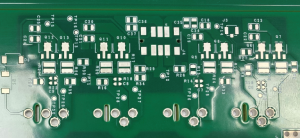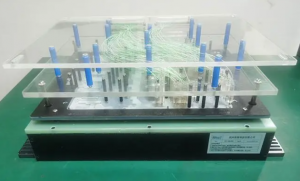Capacitors are common part in a PCBA product, serving diverse purposes like energy storage, signal filtering, and noise suppression. If you’ve worked with electronic components, you’ve probably come across a capacitor marked “103.” Understanding what this marking means, how capacitors are rated, and how to replace or use them correctly is crucial for circuit design and maintenance.
This guide offers clear and concise insights into the 103 capacitor. We’ll explain its value, the significance of its voltage rating, whether it can be substituted, and how to read capacitor codes in general. This information is helpful for engineers, hobbyists, and anyone curious about electronics.
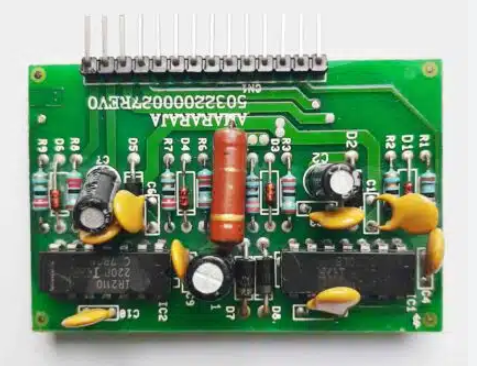
What is a 103 Capacitor?
The “103” marking on a capacitor isn’t random—it follows a standard coding system to indicate the capacitor’s value. Capacitors marked “103” are ceramic capacitors. Ceramic capacitors are widely used because they are compact, reliable, and affordable, making them ideal for high-frequency and general-purpose applications.
The role of a capacitor is straightforward: it stores electrical energy and releases it when needed. Capacitors stabilize voltage, smoothen power supply variations, and filter signals in circuits. The 103 capacitor, being a ceramic type, is non-polarized, meaning it doesn’t have a specific orientation for installation. This versatility simplifies its use in a range of electronic applications.
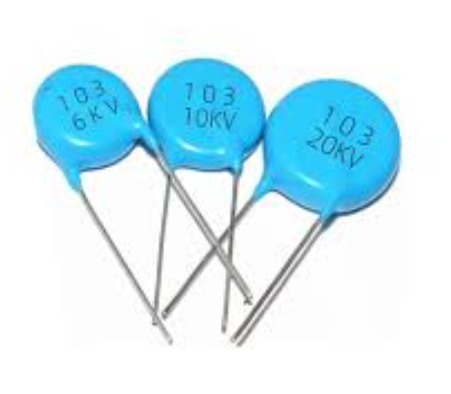
What Value is a 103 Capacitor?
The “103” marking represents the capacitance value in picofarads (pF). The value is calculated using the first two digits as the significant figures and the third digit as the multiplier.
- The first two digits: 10.
- The third digit (3): Adds three zeros.
- Final value: 10,000 pF or 10 nanofarads (nF).
- In microfarads (µF), this value converts to 0.01 µF.
This small capacitance makes the 103 capacitor suitable for tasks requiring precision, such as filtering high-frequency signals, bypassing noise, or decoupling power supply fluctuations. These applications are common in audio devices, microcontrollers, and communication systems.
Why is the Value of a Capacitor Important?
The capacitance value determines how much charge a capacitor can store. In circuits, the value influences how the capacitor interacts with other components. Using a capacitor with the wrong value can disrupt the circuit’s performance. For instance:
- In timing circuits, an incorrect value may alter timing intervals.
- In filtering applications, it could change the frequency range.
Is it OK to Use a Higher µF Capacitor?
Whether you can use a higher µF capacitor depends on the circuit design. In many cases, especially for decoupling or filtering, a slightly higher capacitance may work fine. It might even improve stability by better handling power fluctuations. However, there are scenarios where using a higher µF capacitor may not be advisable:
- Timing Circuits: A higher capacitance changes the time constant, affecting the circuit’s operation.
- Resonant Circuits: Altering capacitance may shift the resonance frequency, impacting performance.
When substituting capacitors, check the design requirements and consult datasheets. If a higher value is acceptable, ensure the replacement physically fits in the circuit. Some higher-capacitance capacitors may be larger, which can cause installation issues in compact designs.
What is the Voltage Rating of a 103 Ceramic Capacitor?
Every capacitor has a voltage rating, which defines the maximum voltage it can handle safely. Exceeding this rating risks capacitor failure, leading to circuit malfunctions. The voltage rating is just as important as the capacitance value.
For 103 ceramic capacitors, common voltage ratings include:
- 16V for low-voltage circuits.
- 25V for general-purpose circuits.
- 50V or higher for demanding applications.
Selecting the right voltage rating ensures reliability. A capacitor should have a voltage rating higher than the circuit’s operating voltage. For instance, in a circuit running at 12V, a 25V capacitor offers a safe margin. Operating capacitors near their voltage limit can shorten their lifespan, so always aim for a comfortable margin.
Can I Replace a 1000µF 10V Capacitor with a 1000µF 16V?
Yes, you can replace a 1000µF 10V capacitor with a 1000µF 16V capacitor. Both capacitors have the same capacitance, ensuring they store the same amount of charge. The difference lies in the voltage rating, with the 16V capacitor offering greater voltage tolerance.
Using a higher voltage rating can improve durability and reduce the risk of failure in the long term. However, check the capacitor’s physical size. Higher voltage ratings often mean larger components, which might not fit in tight spaces. Always ensure replacements align with the circuit’s specifications and dimensions.
How to Identify Capacitor Value?
Reading capacitor values accurately is essential for proper circuit assembly and repair. There are several ways to identify the value of a capacitor:
Markings:
Most capacitors have their value printed directly on the body. For ceramic capacitors, codes like “103” or “104” indicate capacitance in picofarads. For electrolytic capacitors, values are usually written explicitly, like “1000µF.”
Color Codes:
Older capacitors may use color bands to denote values, similar to resistors. Each band represents a specific digit or multiplier.
Multimeter Testing:
If markings are unclear or the capacitor’s condition is uncertain, a digital multimeter with a capacitance mode can measure the actual value. This method is reliable for identifying both new and old components.
Factors to Consider When Replacing Capacitors
Replacing capacitors isn’t just about matching capacitance and voltage. Here are some key considerations:
1. Type of Capacitor: Ensure the replacement matches the type (e.g., ceramic, electrolytic, or film). Each type has specific properties suited for different applications.
2. Tolerance: Capacitor tolerance affects how close the actual value is to the specified value. Use a replacement with similar or tighter tolerance.
3. Temperature Rating: Higher temperature ratings improve durability, especially in environments with fluctuating or extreme temperatures.
4. ESR (Equivalent Series Resistance): Low ESR capacitors are better for high-frequency applications and power supplies.
FAQs
1. What does “ceramic” mean in ceramic capacitors?
Ceramic capacitors use ceramic material as the dielectric. This design makes them compact, stable, and suitable for high-frequency applications. They are widely used in audio, RF, and power supply circuits.
2. Can I use a lower voltage-rated capacitor?
No, using a capacitor with a lower voltage rating than required is risky. It may fail under normal operating conditions, potentially damaging other components.
3. What is the difference between µF, nF, and pF?
These units represent different scales of capacitance:
1 µF (microfarad) = 1,000 nF (nanofarads).
1 nF = 1,000 pF (picofarads).
The choice depends on the circuit requirements.
4. Do capacitors have polarity?
Non-polarized capacitors like ceramic ones do not have polarity. However, electrolytic capacitors are polarized, and reversing their polarity can cause damage.
5. What happens if a capacitor fails?
A failed capacitor can lead to issues like voltage instability, signal distortion, or complete circuit malfunction. Regular checks and quality replacements minimize such risks.
6. Can I use a capacitor with a different dielectric material?
Yes, as long as the capacitance, voltage, and tolerance match, a different dielectric material can be used. However, some materials perform better under specific conditions.
7. What is the role of capacitors in power supplies?
Capacitors in power supplies smooth voltage fluctuations and filter noise, ensuring stable power delivery to connected devices.
8. How can I test a capacitor’s functionality?
Use a digital multimeter with a capacitance mode. Measure the value and compare it to the marked rating. If it’s significantly lower, the capacitor may need replacement.
When replacing or upgrading capacitors, paying attention to values, voltage ratings, and compatibility ensures optimal performance. For projects or repairs requiring high-quality components, trust Best Technology for dependable products and expert support. Let us help you bring your electronic designs to life with confidence and precision.


